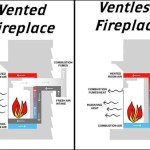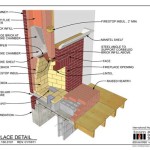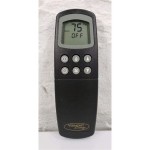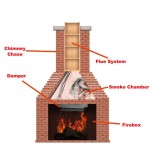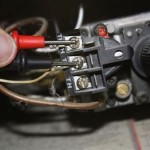Padding for Fireplace Hearths: Safety and Aesthetics
Fireplace hearths, traditionally constructed from stone, brick, or concrete, serve as a functional and aesthetic component of a fireplace. They provide a non-combustible surface extending outwards from the firebox, preventing embers and sparks from igniting flooring materials. However, the hard, unyielding nature of these materials presents a potential hazard, particularly for young children and elderly individuals prone to falls. This necessitates a careful examination of safety measures, specifically the implementation of padding, to mitigate the risk of injury without compromising the hearth's intended purpose and appearance.
The primary concern regarding fireplace hearths revolves around impact injuries. A fall onto a hard hearth surface can result in contusions, lacerations, fractures, and even more serious head trauma. While vigilant supervision is the most effective preventative measure, it is not always feasible. Consequently, various padding solutions have emerged to soften the impact of accidental falls. Selecting the appropriate padding requires a balanced consideration of safety, aesthetics, durability, and ease of maintenance.
Mitigating Impact Injuries: Types of Hearth Padding
Several types of padding are available for fireplace hearths, each offering varying degrees of protection and visual appeal. Understanding the characteristics of these materials is crucial for informed decision-making. These materials vary in thickness, density, and composition, directly influencing their ability to absorb impact and minimize injury.
One common solution involves custom-fitted foam padding. These pads are typically constructed from closed-cell foam, which provides a relatively dense and resilient surface. The closed-cell structure also makes the foam water-resistant, preventing absorption of spills and simplifying cleaning. Custom fitting ensures a snug and secure placement, minimizing the likelihood of the pad shifting or being dislodged. The foam can be covered with a fabric that complements the surrounding decor, offering a degree of aesthetic integration.
Another option involves using pre-fabricated hearth pads. These pads are often made from dense foam or rubber and are available in standard sizes and shapes. While less customizable than custom-fitted options, they offer a relatively inexpensive and readily available solution. Pre-fabricated pads may feature textured surfaces for added grip and be designed to resist heat generated by the fireplace. It is important to verify that any pre-fabricated pad is certified as fire-resistant by a reputable testing laboratory.
Edge protectors represent a more minimalistic approach to hearth safety. These protectors are designed to cover the sharp edges and corners of the hearth, focusing on the areas most likely to cause lacerations and contusions. Edge protectors are typically made from soft, flexible materials like rubber or foam and are attached using adhesive. They are discreet and easy to install, but they offer limited protection against falls onto the flat surface of the hearth.
Material Considerations: Balancing Safety and Aesthetics
The choice of padding material should not solely prioritize safety; aesthetics play a significant role in maintaining the overall visual appeal of the fireplace area. The padding should integrate seamlessly with the existing decor, avoiding a jarring or visually disruptive effect. This often involves selecting materials and colors that complement the fireplace surround, flooring, and other furnishings.
For example, a hearth located in a traditional living room might benefit from padding covered in a neutral-toned fabric, such as beige, gray, or brown. The fabric should be durable and easy to clean, capable of withstanding regular use and potential spills. Textured fabrics can add visual interest and provide enhanced grip, further reducing the risk of slips and falls. Leather or faux leather coverings offer a sophisticated aesthetic but may require more specialized cleaning.
In contrast, a hearth in a more contemporary setting might accommodate padding with bolder colors or patterns. Geometric designs or abstract patterns can add visual flair and complement the modern aesthetic. However, it is crucial to ensure that the chosen pattern does not clash with other design elements in the room. The material should also be resistant to fading and wear, maintaining its appearance over time.
The thickness of the padding also affects its aesthetic impact. Thicker padding provides greater impact absorption but can also appear more bulky and obtrusive. Thinner padding offers a more streamlined appearance but might not provide sufficient protection for high-impact falls. Striking a balance between safety and aesthetics is essential for achieving a visually pleasing and functionally effective solution.
Installation and Maintenance: Ensuring Longevity and Effectiveness
Proper installation is paramount for ensuring the safety and effectiveness of hearth padding. Custom-fitted pads should be installed by a professional to guarantee a secure and accurate fit. Pre-fabricated pads can typically be installed by homeowners, but it is crucial to follow the manufacturer's instructions carefully. Edge protectors should be firmly attached using a strong adhesive to prevent them from detaching during use.
Regular maintenance is necessary to preserve the padding's appearance and functionality. Fabrics should be vacuumed or wiped down regularly to remove dust and debris. Spills should be cleaned immediately to prevent staining and absorption. Depending on the material, occasional deep cleaning or spot treatment may be required. Pads made from porous materials should be inspected regularly for signs of mold or mildew, especially in humid environments.
The long-term durability of the padding depends on the quality of the materials and the level of care it receives. High-quality materials are more resistant to wear and tear, ensuring that the padding remains effective for a longer period. Protecting the padding from direct sunlight can prevent fading and degradation. Replacing worn or damaged padding promptly is crucial for maintaining the safety and appearance of the fireplace hearth.
Ultimately, the implementation of padding on fireplace hearths represents a proactive approach to enhancing safety within the home. By carefully considering the types of padding available, the aesthetic implications of different materials, and the importance of proper installation and maintenance, homeowners can create a safer and more visually appealing fireplace area. This careful attention contributes to a more secure and comfortable living environment for all occupants.

Cardinal Gates Fireplace Cushion Hearth Pads Gray Spk G C The Home Depot

61 To 72 Long Custom Hearthsoft Cushion For

Cardinal Gates Fireplace Cushion Hearth Pads Brown Spk Br C The Home Depot

Jack Mat Hearth Safety Seat The And Home

Jack Mat Hearth Safety Seat The And Home

21 To 28 Deep By 48 60 Custom

How To Baby Proof A Fireplace Diy Hearth Cushion Simply September

How To Baby Proof A Fireplace Diy Hearth Cushion Simply September

Safety 1st Foam Fireplace Hearth Bumper Hs252 The Home Depot

Baby Safety Foam Soft Seat Edge Cushion Fireplace Hearth Guard
Related Posts


